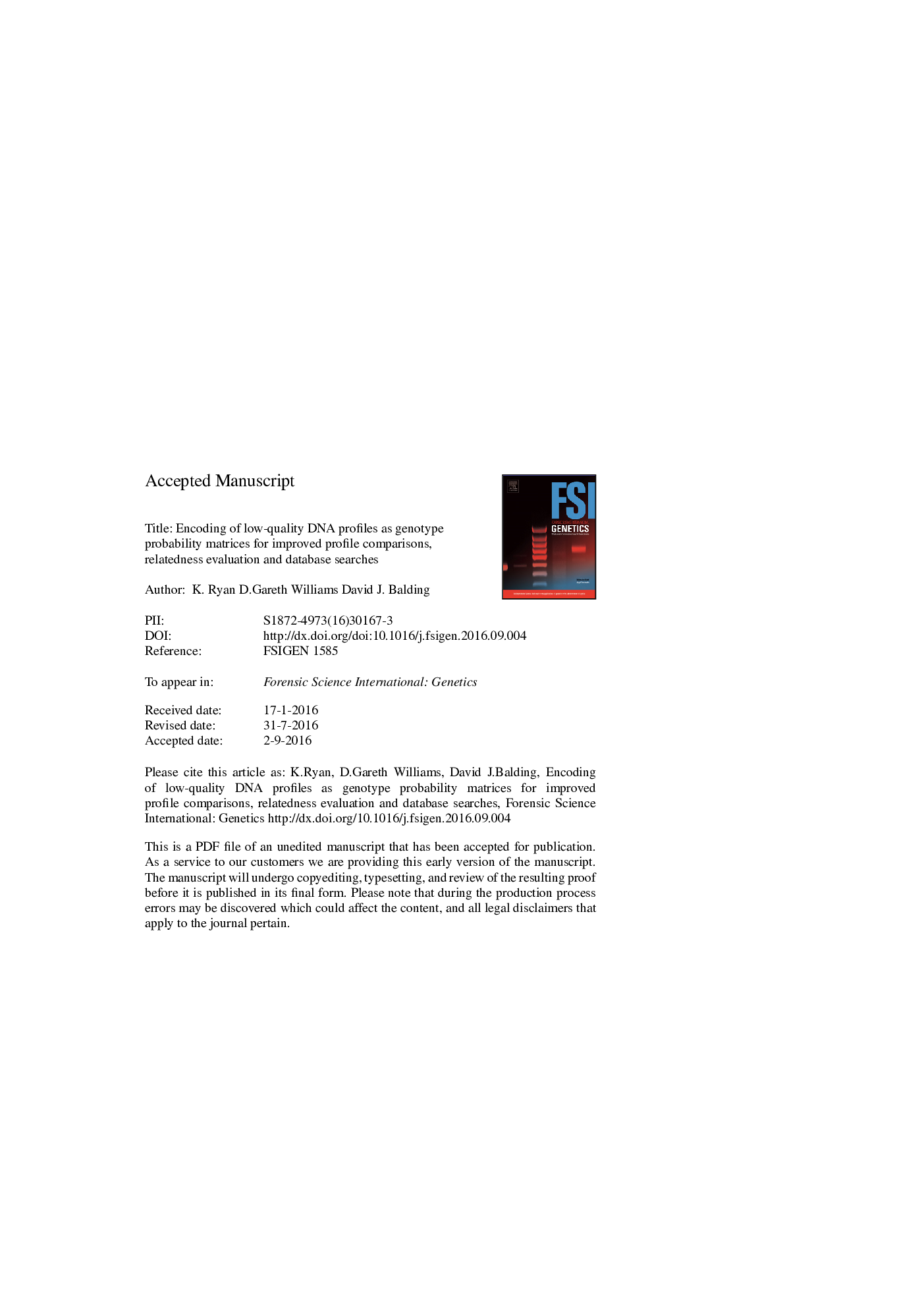| Article ID | Journal | Published Year | Pages | File Type |
|---|---|---|---|---|
| 6553467 | Forensic Science International: Genetics | 2016 | 37 Pages |
Abstract
Many DNA profiles recovered from crime scene samples are of a quality that does not allow them to be searched against, nor entered into, databases. We propose a method for the comparison of profiles arising from two DNA samples, one or both of which can have multiple donors and be affected by low DNA template or degraded DNA. We compute likelihood ratios to evaluate the hypothesis that the two samples have a common DNA donor, and hypotheses specifying the relatedness of two donors. Our method uses a probability distribution for the genotype of the donor of interest in each sample. This distribution can be obtained from a statistical model, or we can exploit the ability of trained human experts to assess genotype probabilities, thus extracting much information that would be discarded by standard interpretation rules. Our method is compatible with established methods in simple settings, but is more widely applicable and can make better use of information than many current methods for the analysis of mixed-source, low-template DNA profiles. It can accommodate uncertainty arising from relatedness instead of or in addition to uncertainty arising from noisy genotyping. We describe a computer program GPMDNA, available under an open source licence, to calculate LRs using the method presented in this paper.
Keywords
Related Topics
Life Sciences
Biochemistry, Genetics and Molecular Biology
Genetics
Authors
K. Ryan, D. Gareth Williams, David J. Balding,
